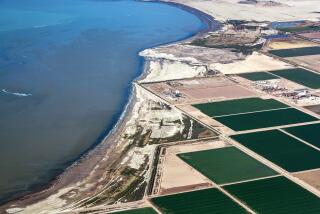The Science Was There
- Share via
In the Dec. 31 editorial, “A Credo for Science ‘04,” The Times stated that the deadly tsunami in the Indian Ocean was “triggered by movement [on] a fault thought to be relatively inactive.” But the Dec. 26 magnitude-9 earthquake came as no surprise to geologists. The motions of the tectonic plates in this part of the world are well known. At the earthquake’s epicenter, the Indian plate is colliding with the Burma plate at a rate of nearly 50 millimeters per year, sufficient to generate such an event every 300 years or so.
Indeed, the historical record shows that great earthquakes occurred on the southern part of this same fault system in 1833 and 1861. The magnitude of the 1833 event was also about 9.
The failure in this disaster was not of scientific understanding but the lack of an adequate system for warning the coastal populations of the impending tsunami in the hours after the earthquake happened.
We should take heed of the lesson: Relatively inexpensive investments in implementing scientific knowledge can sometimes greatly reduce the impact of natural disasters.
Thomas H. Jordan
Professor and director
Southern California
Earthquake Center, USC
*
The editorial touches on a common misconception about science: that it enables us to understand the world with “certitude.”
By its nature, science does not achieve certainty; it merely gets more confident the more thoroughly it investigates.
You suggest Thom Gunn’s poetic line, “One is always nearer by not keeping still,” as a credo for science. It has been all along.
Steve Miller
San Diego






